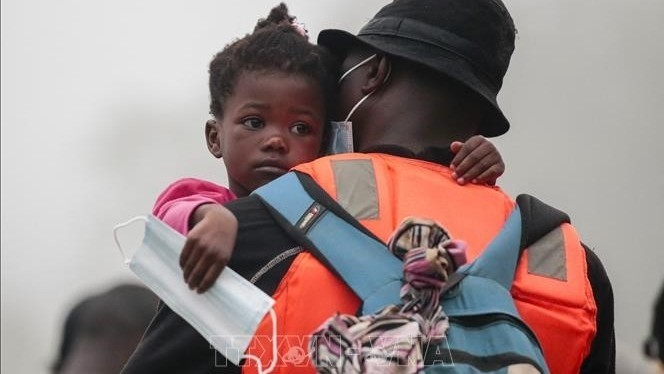The United Nations Children’s Fund (UNICEF) announced that nearly 19,000 children migrated across the border between Colombia and Panama by crossing the Darien rainforest this year, reaching an all-time high. The migrants, mostly Haitian, accept a harsh journey in the forest, in the hope of arriving at the “promised land” in the US or Canada.
Particularly since the beginning of 2021, UNICEF has recorded 5 cases of child death, and 29 complaints about children being abused on the migration journey in the dangerous jungle. The lucky children who survived, after arriving in Panama, also often contract diseases from living for days in the wet jungle, drinking dirty water, and sleeping outdoors.
Poverty, violence, and natural disasters are the reasons why people in Haiti, Guatemala, Honduras, El Salvador... have been trying to come to the US for many years. The COVID-19 pandemic has exacerbated the migration problem. In 2020, Central American countries closed their borders in response to the epidemic which significantly curbed illegal migration, but widened the spiral of poverty and violence. After countries in the region eased restrictions, the wave of migrants has increased massively since the end of 2020.
Considering that the migration problem requires a synchronous resolution involving countries in the region, the administration of US President Joe Biden has deployed investment packages in Central America, with hoping to help reduce poverty, violence, environmental pollution and unemployment there, encouraging people to stay in their homeland.
President Joe Biden also reversed the previous administration's tough immigration policies, taking a more humane approach. But many people think that this policy will encourage more people to cross the border into the US illegally.
Thousands of people still risk their lives to find the “promised land” every year. The US' focus on addressing the root causes and promoting dialogue with countries in the region shows that Washington wants to solve the issue of migration in a sustainable, humane and mutually beneficial way, even though these measures will take many years to achieve the desired results.
















